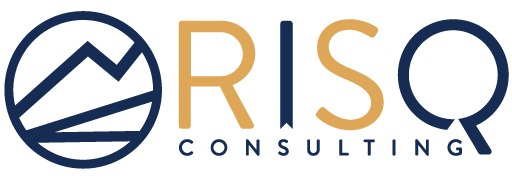Getting Buy-in on HR Initiatives
This article is from RISQ Consulting’s Zywave client portal, a resource available to all RISQ Consulting clients. Please contact your Benefits Consultant or Account Executive for more information or for help setting up your own login.

While today’s HR professionals are tasked with many organizational goals ranging from improving employee engagement to attracting and retaining talent, such initiatives take time, resources and continuous effort. As such, building and maintaining successful HR initiatives can be challenging without support from the overall organization and leadership. HR professionals need stakeholders to listen, understand, and support their views before any initiative can get off the ground.
This article explores strategies for HR professionals to obtain organizational buy-in on their initiatives.
Winning Over Stakeholders
To start, buy-in is the encouragement or support of one’s ideas. Getting buy-in does not mean 100% agreement with a plan or initiative, but it’s receiving the support of key team members or stakeholders—even if they don’t wholly agree. HR professionals will spearhead a myriad of initiatives for an organization. Common initiatives are related to talent and learning and development efforts, or it could be more specific, such as integrating new technology or artificial intelligence. Before an initiative kicks off, others in the organization must approve it or give their blessing. Support may also require a financial investment (e.g., expenses and labor costs) depending on the initiative.
Regardless of the nature of the initiative, there are general strategies HR professionals should consider when trying to pursue a new idea but may be facing roadblocks within the organization. Take into account the following tips:
- Lead with a clear vision. A well-defined vision demonstrates confidence in the proposed idea. Developing a clear vision involves:
- Identifying the problem
- Providing examples of the proposed solution
- Leaning on data and metrics to substantiate the solution
- Considering potential risks associated with the plan
- Align with business goals. An initiative is more likely to gain support if aligned with business goals, core values and other companywide efforts.
- Establish credibility. With a proven track record, leaders and key stakeholders are more likely to support HR professionals and their new initiatives.
- Know the audience. Everyone has different perspectives and opinions, so knowing the stakeholders is essential. A successful pitch will address an important issue to that person or deliver on success for the organization. Strong interpersonal skills help HR professionals build relationships before the next big idea. Still, they can also help them navigate these conversations better by knowing what piques the interest of certain individuals.
- Leverage metrics and data. Harness the power of HR data to help prove the need for an initiative and perhaps ways that others have experienced success. Facts and figures don’t lie, so HR professionals can use data to prove their points.
- Calculate the return on investment (ROI). ROI is often the ultimate measurement tool and the key piece of information stakeholders are interested in. Many organizational leaders understand and relate to ROI, and including this information can help validate the proposed initiative.
- Practice the pitch. Before meeting with stakeholders, practicing the pitch to become more comfortable presenting the idea and supporting information is essential.
- Expect common questions. While it’s important to be prepared for the actual pitch, it’s just as critical to be ready for stakeholder questions. Make a list of expected questions and answers to be properly practiced beforehand. It’ll help show confidence in the plan by not faltering on a question.
Being open to feedback or inviting others to expand on the idea is critical. This collaboration could strengthen the idea, demonstrate a willingness to compromise and build stronger interpersonal skills.
Summary
HR professionals are critical in driving significant impact and transformation within organizations. There are countless options for implementing HR initiatives, but securing stakeholder support is vital for them to either go anywhere or, hopefully, be successful. By selecting the appropriate workplace initiatives and striving to get buy-in from leadership, HR professionals can help bolster their influence and achieve notable results for the organization.
Contact RISQ Consulting for more HR resources.
- Published in Blog
Nonprofit Sector Trends to Watch
This article is from RISQ Consulting’s Zywave client portal, a resource available to all RISQ Consulting clients. Please contact your Benefits Consultant or Account Executive for more information or for help setting up your own login.

Nonprofit organizations operate to fulfill their missions, benefit the community and serve the public. They are essential for maintaining a thriving society and contribute greatly to health care, higher education, environmental stewardship, human services, religious services, arts and culture, and other vital services.
However, in the months and years ahead, the nonprofit sector could face several challenges posed by industry trends, including economic uncertainty, labor shortages and heightened cybersecurity risks. These factors may lead to a drop in fundraising and rising operational costs.
As such, it’s important for nonprofit organizations to closely monitor these sector concerns and adjust their risk management practices as needed. This article provides more information on nonprofit sector trends to watch.
Economic/Recession Concerns
Numerous nonprofit organizations—especially those in the health and human services sector—experienced an increased demand for their services during the COVID-19 pandemic and may have seen an accompanying surge in federal funding and private donations. However, federal support and other funding streams appear to be tapering off due to concerns about an impending recession and high inflation.
Many economists and business analysts agree that a recession is likely to happen within the next year. As a result, many organizations will be challenged with changing consumer behaviors, increased costs, labor market changes and increased reputational risk. For nonprofit organizations specifically, economic downturns often result in a decline in private contributions from individual, corporate and foundation donors, decreased funding from the government and reduced endowments.
Data from the Chronicle of Philanthropy found that the recent significant reduction in donations may signal serious financial trouble for nonprofit organizations as the recession hits. According to the report, donor numbers fell 7% in the first half of 2022 compared to the first half of 2021, with the number of people making contributions of $100 or less dropping more than 17%. In fact, nonprofits are experiencing compounding donor loss each quarter, and the most significant concern these organizations face is an uncertain economic year.
Since U.S. nonprofit organizations are valuable contributors to society and the economy in general, it’s important they focus on innovative solutions and effective risk management to ensure short-term survival as the economic downturn leads to a loss of funding. Best practices include diversifying funding sources, aligning with partners across the nonprofit sector to maximize the pool of potential donors and developing a communication strategy to reach target audiences.
Labor Shortages
The nonprofit sector has the third-largest workforce in the United States, employing over 12 million people. However, employment fell by 1.6 million during the pandemic and decreased even more during the Great Resignation—an unprecedented mass exit from the workforce spurred by the pandemic. As a result, a tight labor market and a shrinking pool of workers have increased talent competition, leaving many nonprofit organizations understaffed. Since these organizations may struggle to offer competitive salaries and benefits, they often lose employees and candidates to better-paying jobs elsewhere. Even volunteerism remains below pre-pandemic levels—dropping 7% between 2019 and 2021, according to a U.S. Census Bureau and AmeriCorps survey—as people continue to worry about their health, vaccine protocols and sanitation practices.
Inadequate staffing at some nonprofit organizations may lead to delays or a complete loss of needed services, causing the communities they serve to suffer. A survey from the National Council of Nonprofits found that 26% of nonprofit organizations have a waitlist more than a month long, and 21% don’t even have a waitlist because they are currently unable to accept new clients. In addition to issues with providing services, inadequate staffing can lead to financial instability, damaged reputations, data breaches, insufficiently trained staff and board member liability issues.
To attract and retain staff, some nonprofits have started to offer better pay and benefits as well as improved workplace advancement opportunities and flexibility. Many nonprofits are also making an effort to increase the diversity of leadership and staff, which can have a positive impact on employee and client relationships and help attract and retain top talent. Nonprofit insurance coverage—including general liability insurance, commercial property insurance and business income insurance—can also help organizations ensure the continued protection of people and assets while they fulfill their missions.
Heightened Cybersecurity Risks
Cybersecurity risks are becoming increasingly severe, targeted and frequent across all sectors. However, nonprofits are particularly at risk since many organizations don’t have the funding to implement adequate cybersecurity protocols. In addition, nonprofits often collect and store highly valuable information about their clients, donors and employees, making them a prime target for cybercriminals. The shift to remote work during the COVID-19 pandemic also significantly increased exposure to data breaches and cyberattacks for several reasons, including expanded attack surfaces, less oversight by security staff and unsecured hardware and networks.
Unfortunately, the way many nonprofit organizations conduct business makes them vulnerable to cyberattacks. For example, while technology has made it easier to accept donations online, it has also made it easier for cybercriminals to steal from them, especially if the website is unsecured. Technology has also allowed for simpler communication processes, but clicking a bad link, downloading a file or opening a malicious PDF can result in a cybersecurity incident with potentially devastating consequences. And while volunteers may have good intentions for volunteering their time, there may be cybercriminals who slip through quick onboarding processes and leave organizations at risk of a cyberattack.
Since nonprofit organizations tend to operate on a limited budget, investing in robust cybersecurity measures or recovering from a data breach may be more difficult than it is for other organizations. However, many cyberattacks can be prevented by locking down the digital donation system, securing email communications, and obtaining a criminal background check on all staff and volunteers.
Conclusion
Overall, there are several trends currently impacting the nonprofit sector. By staying on top of these developments and taking steps to mitigate their associated exposures, nonprofit organizations can effectively position themselves to maintain long-term growth and operational success.
For additional, industry-specific risk management guidance, contact us today.
- Published in Blog
The 4 Es (no, 5 Es) to Organizational Success
By Andrew Kupperman, Employer Services and Workforce Technology Consultant
If you’ve watched an organizational effectiveness related webinar in the last 5 or 6 years, you’ve undoubtedly come across one of the terms I wanted to talk about in this blog post. But the one thing that’s likely lacking in whatever webinar you watched, is how these terms relate to each other to provide a bigger picture in how you can truly lead an effective organization. My goal in this blog post is to better define these terms and help you understand how they relate and flow between one another.
Engagement
The first term, which has become a nauseating buzz word in business, is engagement. Even before the struggles of the pandemic organizations across the globe have been trying to wrap their arms around how to engage their workforce, because they’ve been told relentlessly by business support vendors, if your employees are not engaged, they will leave. There has been a myriad of solutions presented to “engage” the workforce – gamification, innovative technology, new benefits, etc.
But one thing most organizations fail to think on and realize as part of this process is what engagement really means to an organization. Engagement is something that is subjective, and defined by the organization, not employees. Most organizations liken engagement to the sense that an employee is keyed into the work they’re doing, and maybe even going above and beyond the duties and tasks laid out in their job description. I’ve also seen some organizations define an engaged employee as one who kind of acts like a robot, but I also know most organizations don’t intend it to be characterized that way.
Experience
Moving on to the next E, one of the reasons why organizations might struggle with engagement is because they fail to understand the experience they create for their workforce, which can shape how engaged (remember, as defined by the organization) an employee may end up being. Often organizations think providing a new platform or benefit is the way to shape a better experience, but experience is so much more than the tools and benefits you provide your workforce. Experience also includes (but not exclusive to) things like culture, leadership, relationship with a direct supervisor, interaction with other team members, and training. Everything someone encounters during (or even outside) the hours of work can shape an employee’s experience. Even something like texting an employee after hours plays into their experience. Not knowing the experiences employees have while working for an organization puts the organization at a disadvantage in understanding what an ideal engaged employee looks and feels like.
Expectations
This brings me to the next E, expectations. Most organizations want their employees to have a good experience while they are working for them. Good employee experiences lead to good client experiences, which leads to organizational growth and positive branding. Setting clear and visible expectations is the critical link between engagement and experience. In doing so, you are providing a roadmap for the employee to understand what their experience is going to look like, as well as how expect an employee to engage in the work that is being done at the organization.
Clear expectations also help when something goes wrong, which despite all efforts to set clear expectations, will happen from time to time. Expectations can let the employee know if something goes wrong or wasn’t supposed to happen, that there is way for the employee or the organization to recognize what went wrong (policies and procedures 😊), and how the employee and organization are going to engage in correcting it. This creates trust between an employee and the organization and will hopefully lead to mitigating the employee falling out of engagement, or even worse, making the decision to leave the organization.
Empowerment
So far we’ve learned that setting clear expectations can lead to better experiences, which results in more engaged workforce. This type of environment can foster the next E, empowerment. Truly engaged employees who are trusted and reciprocate that trust are imbued with a sense of empowerment to do better. Through clear expectations and good experiences, psychological safety is created within an organization where employees aren’t afraid to speak up when they see something that can be done a different and better way. Who wouldn’t want to work for an organization where you are empowered to make the work you and your coworkers are engaged with continuously better? An entire workforce of truly empowered workers sounds like a team of superheroes for an organization.
Employees
To the tile of this blog’s point, I’ve talked about the 4 Es, but really there are 5. The last E is employees. Remember, employees are not just engaged robots. The experiences you provide them impacts their entire lives. They are there to help the organization, so setting clear expectations will let them know how they can do that. And lastly, everyone should have a sense of empowerment in whatever they do, to make it a little bit better. This will truly create an effective organization.
- Published in Blog
Vendor Management Tips for Small Businesses
This article is from RISQ Consulting’s Zywave client portal, a resource available to all RISQ Consulting clients. Please contact your Benefits Consultant or Account Executive for more information or for help setting up your own login.

Small businesses often don’t have the resources or expertise required to conduct every necessary function. That’s where vendors come in; they provide access to expertise, products and services that help a business run. Establishing practices for managing vendors is important for small businesses’ overall success and long-term growth, but vendor management comes with its own challenges. Luckily, there are strategies small businesses like yours can implement to efficiently manage their vendor relationships in order to optimize processes.
This article explores vendor management, including its benefits, potential challenges and best practices that will aid small businesses.
What Is Vendor Management?
Overall, the purpose of vendor management is to build, maintain and strengthen relationships that are essential to an organization’s success, such as lowering costs or increasing output. Therefore, it is important to note that regardless of your small business’s vendor management practices, they require overall business discipline and coordination from different areas, such as HR, finance and leadership. This is because the key elements of successful vendor management include vendor selection, contract negotiations, onboarding, vendor performance monitoring, risk management and payment processes.
Importance of Vendor Management
Vendor management is important for several reasons, including having better vendor selection, streamlining contract management, creating strong vendor relationships, enhancing vendor performance management and creating overall better value. The end goal of vendor management is to strengthen a company’s success and overall market performance, improve efficiency and lower costs, all of which can help your business get the most value out of using vendors and achieve its short- and long-term goals.
Vendor Management Challenges
Despite the benefits to vendor management, there are challenges to consider as well. The most common vendor management challenges small businesses face include:
- Compliance risks
- Payment terms
- Data storage and security
- Reputation management
It’s crucial to have processes in place for your business to follow when working with vendors to avoid challenge-related threats. Working with vendors often includes sharing sensitive information, which puts your business at risk if you’re not careful.
Navigating challenges related to vendor management doesn’t have to be impossible. In fact, there are ways to make the process easier for your small business.
Vendor Management Best Practices
To navigate challenges and avoid risks, it’s important to develop established practices for your small business to follow when working with vendors. Consider some of the following best practices:
- Review contracts. It’s important to write formal documentation while working with vendors. This keeps both the small business and the vendor on the same page and accountable for any communication or financial transactions.
- Put all terms in writing. Put all terms and agreements between your small business and vendors in writing. This could include agreements regarding quality control, delivery times and communication expectations.
- Communicate regularly. Getting to know your vendors is essential; this means you must communicate with them on a regular basis. Respond to vendor communications quickly and address any issues in a timely manner. The more effective the communication lines are, the better the experience will be for both parties.
- Be selective. Every time a small business chooses to outsource, it has to navigate the risk of doing so. Therefore, it’s beneficial to avoid high-risk collaborations, such as vendors who process financial transactions on the organization’s behalf. It can also be advantageous to create a framework and policies that help deal with issues if they happen to occur to mitigate potential risks.
- Establish expectations. It’s important for small businesses to communicate their expectations to vendors. This means it’s important that you and the vendor are in frequent communication. Expectations can be built into the terms of the contract and mutually agreed upon before the partnership is finalized.
- Control costs. Before committing to working with a vendor, verify that the vendor’s pricing does not exceed your organization’s budget. All details pertaining to pricing, such as payment methods, billing frequency and rates, should be laid out in advance in the agreement between the vendor and the small business.
Summary
Working with vendors can be challenging, as there are a variety of moving parts for both the small business and the vendor. The way each business chooses to navigate working with vendors is unique, so what may work for one business may not be the best for another. However, by creating processes for your small business to follow when working with vendors, you can mitigate the risks you could face and establish a strong, successful vendor relationship.
For additional small business resources, reach out to RISQ Consulting today.
- Published in Blog
Task Oriented or Relationship Oriented
By Shayla Teague, Individual and Family Benefits Consultant
I had the opportunity recently to take a life changing course on social styles through the Wilson Learning Company. This course forced me to take a deep dive into my own communication style and learn to recognize the communication styles of others. It has helped me to not take offense to people that have different styles than my own and flex to their style of communication. All around, this has allowed me to foster more meaningful dialogue, especially in high-stress conversations.
There are four main styles: Analytical, Driver, Amiable, and Expressive. Each style sits in an area of a quadrant that determines if their communication style is more assertive or less assertive and more task oriented or more relationship oriented. Knowing where you sit on the quadrant can help you understand your communication style. This is done through a test offered by Wilson Learning. I will explain each style in more detail.

Analytical
Tends to work in facts and figures, needs more time to analyze a project, often more serious in demeanor, likely explains in great detail. A person with a dominant analytical personality tends to be less assertive and more task oriented. They aren’t too comfortable discussing emotions. They are likely to ask vs. tell. “Will you please provide the CPA Report.”
Driver
More results focused. They don’t need all the details in how you got to the end result, they just want the end result. They value actions and results and don’t need to spend a lot of time on the planning aspect. A driver tends to be more assertive and more task oriented. They don’t like to hear emotion when it comes to work. They are likely to tell vs. ask. “I need the CPA report by 2pm.”
Amiable
Tend to have high empathy, avoid conflict, want the general consensus of the group, and are team and relationship focused. An amiable person will really focus on how a decision will impact the people in a group. They are less assertive and more relationship oriented. Communications likely focus more on emotion and feelings.
Expressive
Tend to be more animated and impulsive. They tend to have many ideas and have a hard time sticking to just one. Expressive personalities have a lot of ambition and enthusiasm, however they tend to be more spontaneous. They are more assertive and more relationship oriented.
People do not fit in a box, so we all are not one of these categories and some of our traits likely fit into all four. Everyone has a dominate style and a secondary style and your style is likely to remain the same throughout your adult life. During the course we watched videos of the most extreme scenarios as we were learning to recognize other people’s styles by their behavior, communication and even hand gestures or how much eye contact they make.
My dominant personality is analytical as you may have already caught onto by the writing style of this article. The analytical in the video was portrayed as rigid and standoffish. We were asked if any of us disagreed with our style and I raised my hand and continued to explain why there is NO WAY I could be a dominant analytical. A colleague of mine interjected and pointed out, “Shayla, you are analyzing why you are not an analytical.” Alas, I had to concede to that.
So how does this all play into communication? Surely, we are all aware that people are different and have different ways of communicating. That is where flexing to other styles comes into play and why it is helpful to be able to identify another person’s style. I had a supervisor that was a driver, driver. That means both his dominant and his secondary style fell within the driver quadrant. I always wanted to go into major detail about all the steps that I took to complete a project. It was disheartening for me when he just wanted the results and thought my e-mails were too long. It can be exhausting for a driver to listen to all the details when they just want you to get to the point. Because of the training I was able to recognize him as a driver and so I was able to adjust the way that I communicated projects with him. I could just give him the necessary information and leave out the fluff. If I am communicating the same project to an amiable style, they may think I am being abrasive by communicating in this manner. I may want to keep some of the fluff or emotion in my communication.
Knowing your style and being able to recognize the style of others can help communication immensely. This is especially the case if you are in a supervisory role. Flexing to the style of your employee can help them feel valued and heard.
Source and link to Wilson Learning Course and Handbook:
https://global.wilsonlearning.com/resources/hidden-cost-comm/
https://global.wilsonlearning.com/resources/the-social-styles-handbook/
- Published in Blog
10 Themes from HR Tech’s Virtual Spring Conference
By Andrew Kupperman, Employer Services and Workforce Technology Consultant
These days everyone seems to have an overabundance of time on their hands, so I’m sure you spent that free time attending HR Executive Magazine’s HR Tech Virtual conference last week. But just in case you found something more interesting to do (which is unlikely), I wanted to share the 10 themes that were presented as organizational imperatives. These are the 10 areas that an organization should dedicate some love and attention to in order to keep doing what they do best for the foreseeable future.
If you haven’t heard of the HR Technology conferences before, they bring together organizational and business thought leaders from all corners of the earth, who talk about the struggles businesses are faced with now, and in the future, and what’s happening within workforce technology to help solve these problems. Check out the link below to the article, 10 Themes From HR Tech Virtual to Help You Prepare for the Coming Decade.
- Published in Blog
The Top 5 Attributes Every Employer Should be Fostering
By Andrew Kupperman, Employer Services and Workforce Technology Consultant
Within just the last year, much has changed relative to the way organizations operate. I feel the most impactful change, which may be felt as a more lasting impression, is the way organizations recruit and retain employees. Some say we’re going through a revolution in the workplace. They liken what’s happening to The Great Depression by calling it the “Great Resignation”.
While these analogies do hit home relative to the sentiments of our times, I’d like to use my own metaphor. What we’re experiencing right now is a Perfect Storm. We have:
An ongoing pandemic. This has forced many business models to shift structure to accommodate remote work, now and in the future.
A shift in generational worker mindset. This has caused a shift in organizational values away from prioritizing the bottom line and towards providing flexibility, meaning, and value to the clients, employees, and community that an organization serves.
A transformation in compensation mindset. This is forcing organizations to consider their strategy and practices related to pay equity, pay equality, and pay gaps.
How organizations alter course relative to this Perfect Storm can determine if they sink or swim. Below are some of the employee attributes I believe are best suited to weather the storm and help an organization find calmer seas.
Adaptability
The changes we’ve faced over the last almost 2 years have forced many into personal and professional changes they weren’t ready for nor were they expecting. Those who are riding out this big wave of change are doing so mainly because they’ve kept open minds about change, found effective coping mechanisms, and remembered that change is the only thing that’s constant.
Having adaptability attributes will only put an organization in a better position to tackle future change, which is inevitable. Employees who can easily adapt can also help those who are change adverse understand and jump the “what’s in it for me” hurdle, which seems to be a constant barrier for those who don’t react well to having change forced upon them.
Innovation
As we seem to be in a flux of constant change, organizations that are rising to the top are not just those that are weathering the storm – they are riding those tall waves to new heights. Love him or hate him, Elon Musk has just successfully sent civilians to space through his SpaceX program. Being a billionaire has its perks, though Mr. Musk probably doesn’t achieve this feat without some of the most innovative talent on his team.
Having employees who want to help create something new and can think out-of-the-box to get there (even in the middle of a perfect storm), can only help organizations develop innovative products and services that provide new value to who they serve.
Emotional Intelligence
We’ve all been through a lot over the last 2 years. Having employees who can be sympathetic and empathetic to other’s plights, can help other employees feel cared for and supported through times of need. You’d hope most organizations practice this throughout their various hierarchies, but many businesses have faced difficult decisions recently. Having the attribute of emotional intelligence widely spread within an organization can only help those facing turmoil, be able to feel supported enough to get through it. If your organization as a whole is able to do this, it’s leaving lasting positive impressions for that employee.
Accountability and Clarity
These attributes may be tough for many organizations to identify because they might not have built a great structure to help keep employees accountable in the first place. Focusing on these attributes and identifying who (whether in or outside of an organization) consistently sets clear expectations of themselves based on organizational needs, and then holds themselves to these expectations is a huge blessing. These individuals need to become example setters within any organization, especially in times of disruption and change.
Many employees might question that the organization owns the role to set expectations and keep employee accountable, so organizations need to consider a thoughtful way to approach the fact that these are highly valued attributes, and how to properly encourage and recognize positive outcomes when employees display creating clarity and accountability.
Valuing Own Needs
This is no longer your grandad’s workplace environment. The shift in what’s valued when someone chooses to work with an organization has changed. Organizations that don’t pivot based on this shift will become obsolete because eventually they won’t be able to find employees who want to work for them. Finding employees who understand and can communicate what they value is a key component to the shift we’ve seen. Organizations can’t identify what their employees’ value in a vacuum. Employees must be able to communicate their needs.
Whether it’s flexibility, community and social awareness, or work-life balance, employees who can clearly express these values and hold themselves and the organization accountable (see prior attribute) when these values are being abused, can only help themselves as well as the organization in meeting these values. I feel the need to ask, would you rather work with someone who can stand up for their values or someone who’d let you walk all over them?
Finding and fostering these attributes may be different than how your organization recruits new employees, or even considers what attributes currently exist across employees. But being able to identify them, and more importantly, encourage them to be used, may just be the ticket to getting to those calmer seas. Happy sailing!
- Published in Blog
Expectation vs. Reality – The Digitization Dilemma
By Andrew Kupperman, Employer Services and Workforce Technology Consultant
When an Employee starts working with an Employer, there are a variety of different expectations that go into forming that Employee/Employer relationship. For example, the Employer is going to expect the Employee to show up to their job and do the work asked of them. Correspondingly, the Employee is going to expect to be compensated for the work that was asked of them. These are the basic expectations at the heart of every Employee/Employer relationship, but they set a very important tone for all other expectations derived from this ongoing relationship.
Additional relationship building expectations include the Employer providing the Employee the tools, resources, and training to be able to do the work that is asked of them. In many organizations, one tool in particular – technology – often creates friction in the Employee/Employer relationship. There are a lot of reasons why this occurs.
CAPABILITIES
Workplace technologies don’t typically have comparable capabilities to the technology we all use daily in our personal lives. In fact, when looking at some capabilities in workplace technology, you could probably go back 5, 10, or even 15 years to see those capabilities being released for personal use. Don’t get me wrong, I know there are thousands (yes thousands) of technology vendors trying to close this gap for workplace technology, but because these gaps still exist, there is a gap that exists in what the Employee expects from their Employer, which can strain the relationship. This is especially true for younger workers just entering the workforce.
BRIGHT SHINY OBJECT SYNDROME
More often than I’d personally like to see, organizations decide to purchase and implement new technology just because of a cool demo someone saw. A word to the wise: the demo isn’t how your organization is going to receive that technology out of the gate – it needs to be built and implemented in order to eventually get there.
If you’ve ever seen Jason Averbook speak (the CEO and Founder of Leapgen, an organization that consults around workforce technology with Fortune 500 and very large global organizations as well as a thought leader in workforce technology space), he often discusses the difference between implementing technology and an organization successfully digitizing its processes. He uses a formula to describe that the digital equation for success includes 20% organizational mindset about digitizing, 25% of the people (ie: Employees) involved in using technology, 45% of understanding and aligning processes, and only 10% of the actual technology system, which is just the tool being used.
I know organizations want to be able to adopt and use technology like we do in our personal lives. But most organizations are big, clunky, and slow moving, so it’s hard to just try out a new technology tool and then scrap it a few days later because you don’t like it (like we do with apps on our phone). In most organizations, operating in such a manner would be fiscally irresponsible and cost them tens of thousands of dollars annually, if not more.
OWNERSHIP
Lastly, an organization leadership often owns the technology selection, implementation, and workflow processes. Again, there is an expectation in the Employee/Employer relationship here, as the Employer provides the Employee with the technology. There will be times that the leadership delegates these components to different areas of the business (for example when looking at finance, HR, or operational technologies). However, in doing so, they unknowingly create silos within the organization and don’t strategically think about how adopting these new technologies can impact other areas of a business.
An even more unfortunate scenario is when only one or two of those components are delegated (maybe the implementation or workflow processes). By not including key stakeholders in the selection process, an organization opens itself up in failing to meet the goals set out for adopting that technology. I understand and agree that the leadership often needs to be involved from a budgetary standpoint, but by not looping in those stakeholders to help select the technology they’ll be working in, it can be like forcing people to use those bloatware apps that come preinstalled on your new smartphone… but that no one ever end up using. This too can strain in the Employee/Employer relationship.
SOLUTION
There are definitely other reasons why the expectations around workplace technology can create friction, but the crux of the issue (at least as I see it), involves Employers not being strategic enough in considering the people and processes currently involved when they first set out to adopt new technology. They naively expect an instant and miraculous return on investment from their Employees who are using that technology. Employers need to remember that most people are innately change adverse, and not considering them when forcing change upon them is more likely to end in poor experiences for everyone.
The solution seems simple. Employers should find ways to involve and empower their Employees when it comes to providing technology to them. If Employers can find a way to give Employees the opportunity to be involved in selection and allow them to experiment with technology like they do in their personal lives (if the Employer’s budgetary needs are considered), this will create buy in and will lead to success when meeting organizational goals relative to adopting new technology. It is a bit of a mind shift based on the expectations as part of the predicated Employee/Employer relationship, but by creating the ownership and accountability for Employees, you’re also creating more ENGAGED Employees.
- Published in Blog











